My soft and spongy aval dosai/poha dosa recipe without any yogurt or buttermilk! Check out the easy-to-make and naturally vegan aval dosa recipe with detailed step-wise pictures.
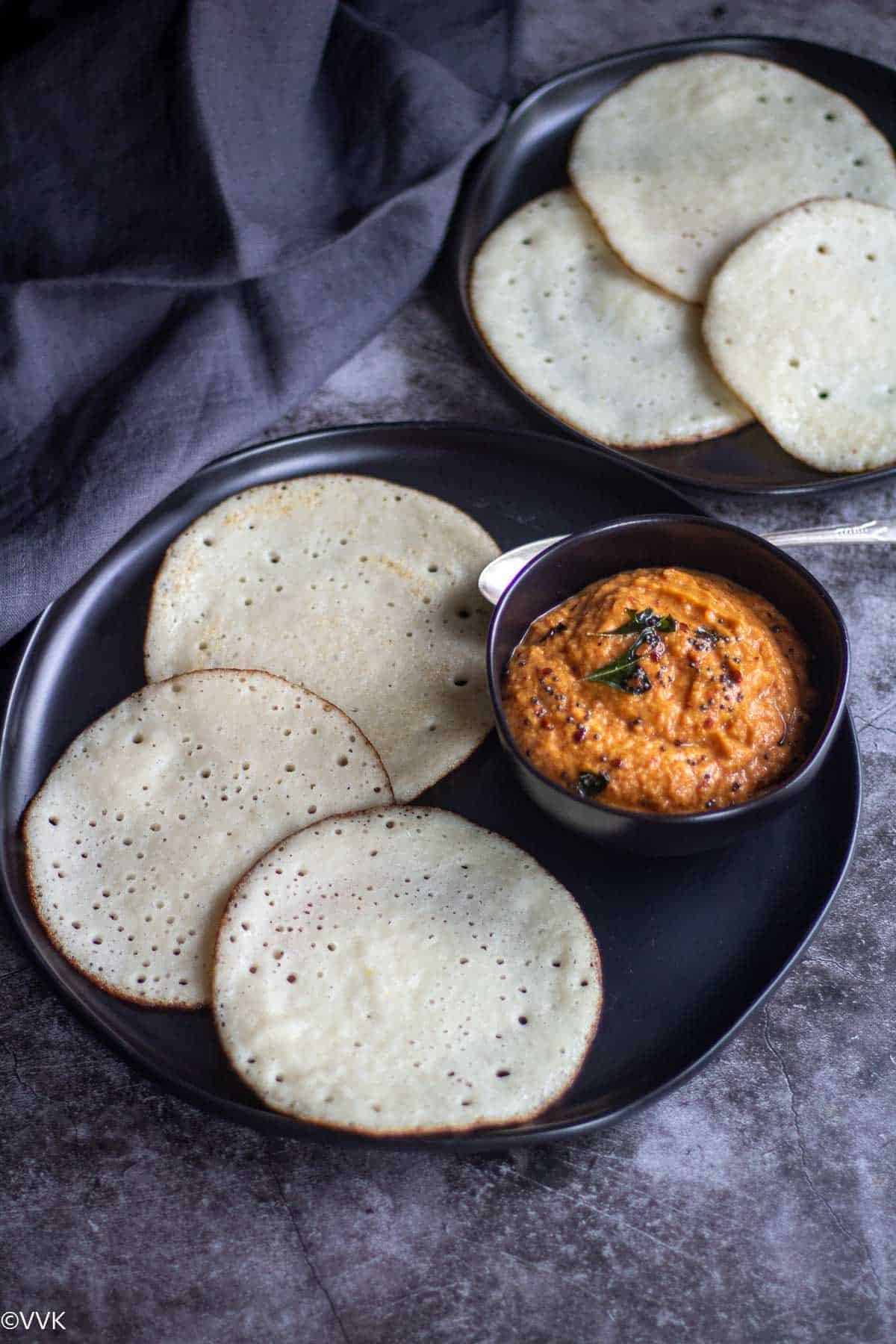
Dosa, or as we say in Dosai in Tamil, the savory rice and lentil crepes/thin pancakes is pretty famous across the world these days. Most Indian restaurants have idli and dosa on their menu these days, and they usually serve it with chutney and sambar.
Jump to:
To prepare the dosa, we need the batter. You can prepare instant batters like I did for my wheat dosa or soak the ingredients and make it from scratch. The basic dosa batter calls for rice and urad dal(dehusked whole black gram), and with that batter, you can prepare a variety of dosa with different toppings. Alternatively, you can alter the ingredients and make different dosa like this aval dosa.
While we love both idli and dosa, we always pick dosa given an option. If you follow me on IG, you all will know how I experiment with idli/dosa batter. My followers have tried those, and I have received positive feedbacks also. But somehow, I never got a chance to post them on the blog. So this year, I have decided to share a few dosa varieties, both instant and non-instant, and I am starting with the first one – soft and spongy aval dosa.
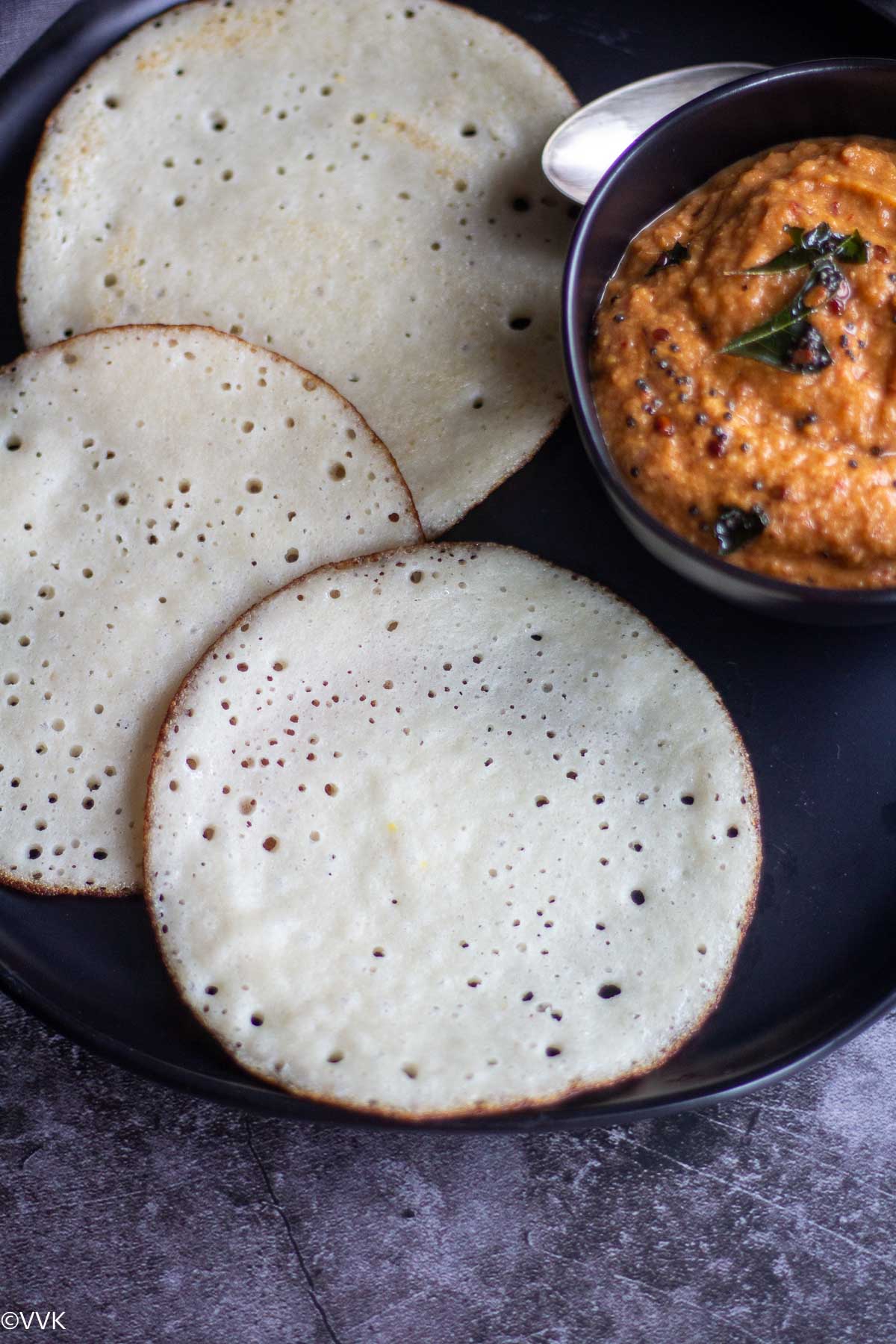
So what’s aval?
Aval in Tamil / poha in Hindi. We call aval or poha flattened rice or beaten rice in English. Rice is parboiled, and it is beaten or flattened thin, and it is dried. We have different poha varieties like thin or thick, based on how thin or thick it is beaten.
What’s so special about this aval dosa?
- We all know that aval dosa is soft and spongy, but most of the recipes call for yogurt or buttermilk, but I don’t use them both, making this recipe naturally vegan.
- While this is not an instant dosa variety, you can make the dosa as soon as you grind the batter. Fermentation is not necessary.
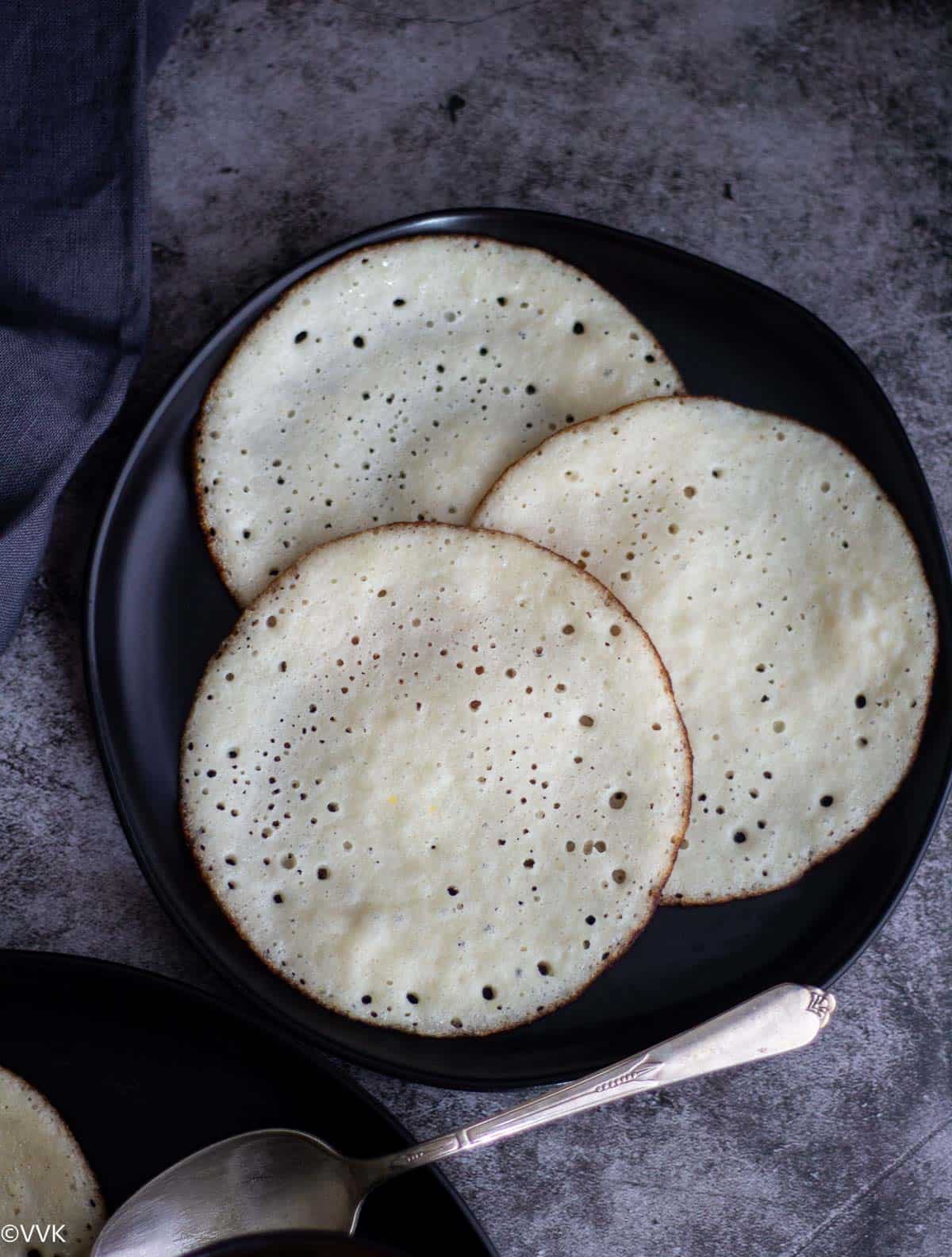
Ingredients required
We need idli rice, whole white urad dal, poha/aval, fenugreek seeds, toor dal. And of course, we need water, salt, and oil to prepare the dosa. Some key points to note about the ingredient,
- I follow the 1:1 ratio of idli rice to poha/aval.
- You can use red or white poha for this dosa. And I always use the thick variety of poha for this recipe.
- Fenugreek seeds and toor dal add a nice flavor, so don’t skip them.
Dietary specifications & yield
This aval dosa is naturally vegan (unless you use ghee for making dosa), gluten-free, and nut-free, making it suitable for all.
The below measure yields approx 15 to 16 dosa.
Prepare the batter ahead and make them when needed. Relish the aval dosa hot with chutney or sambar. I have never made these dosas ahead and stored them for a long time.
How to make aval dosa
Rinsing and soaking
- Take the idli rice, urad dal, fenugreek seeds, and toor dal in a bowl.
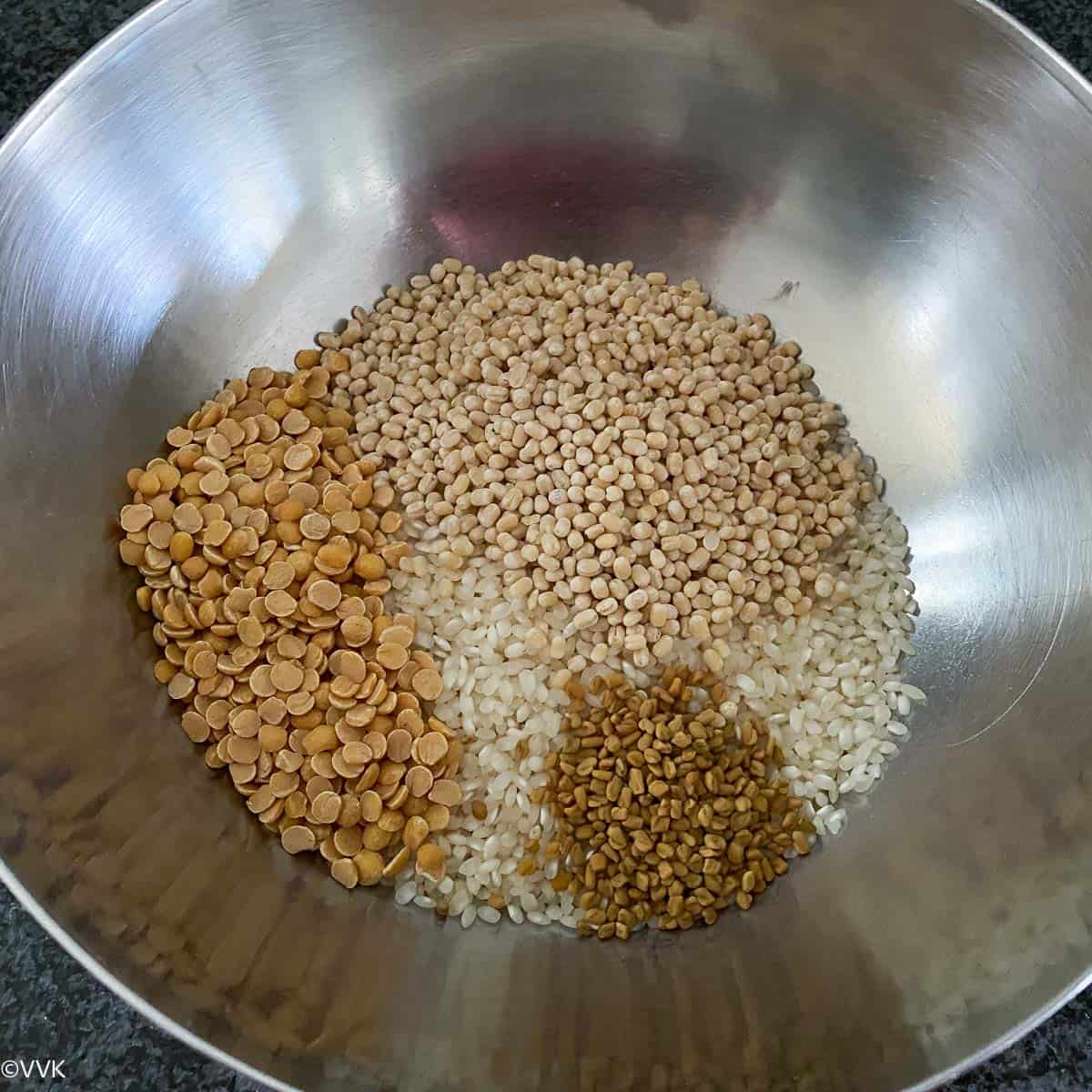
- Wash them together atleast 4 to 5 times until the water runs clear. Now add sufficient water and soak for atleast 5 to 6 hours.
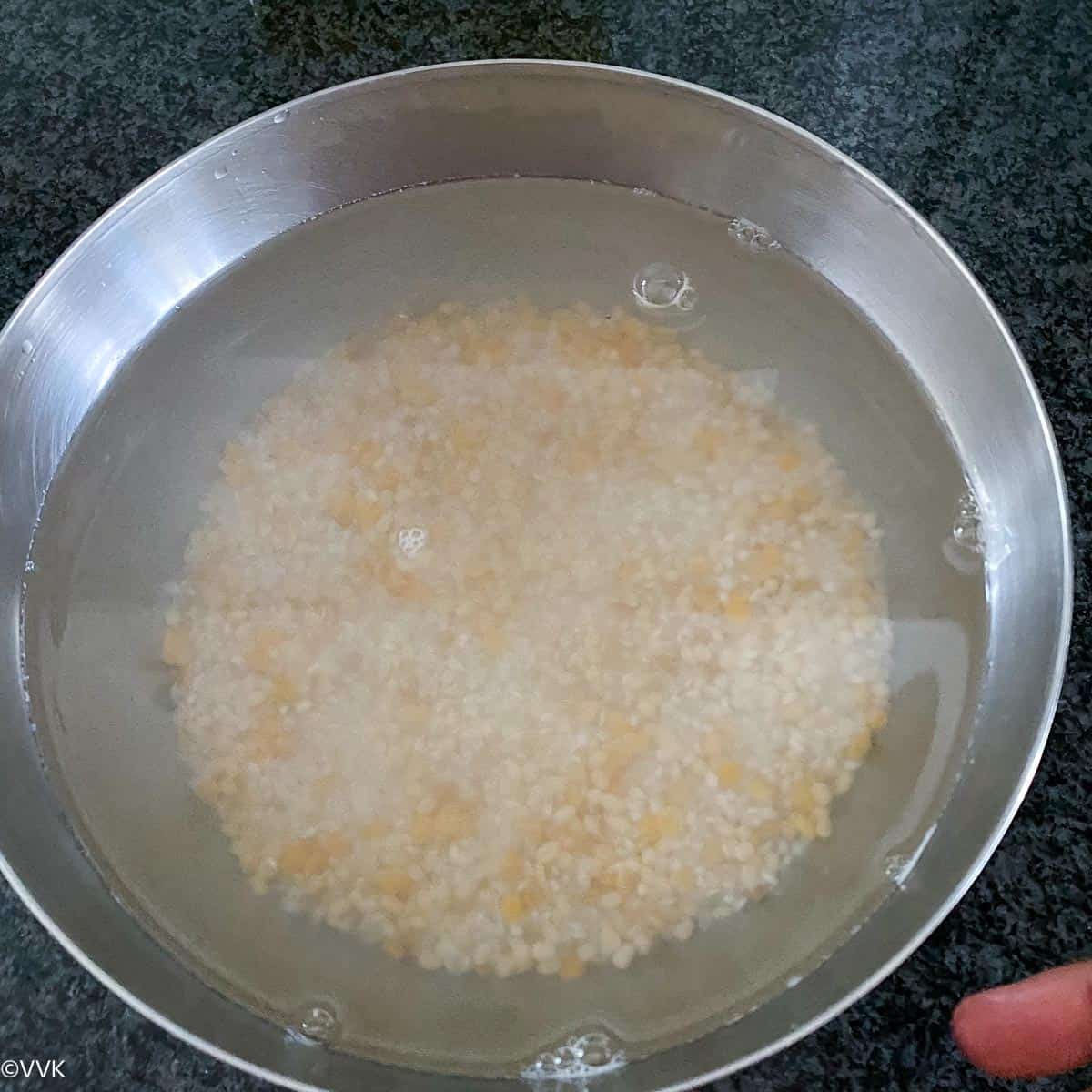
- Take the poha in a separate bowl and rinse it thoroughly. Now add sufficient water soak poha for one hour.
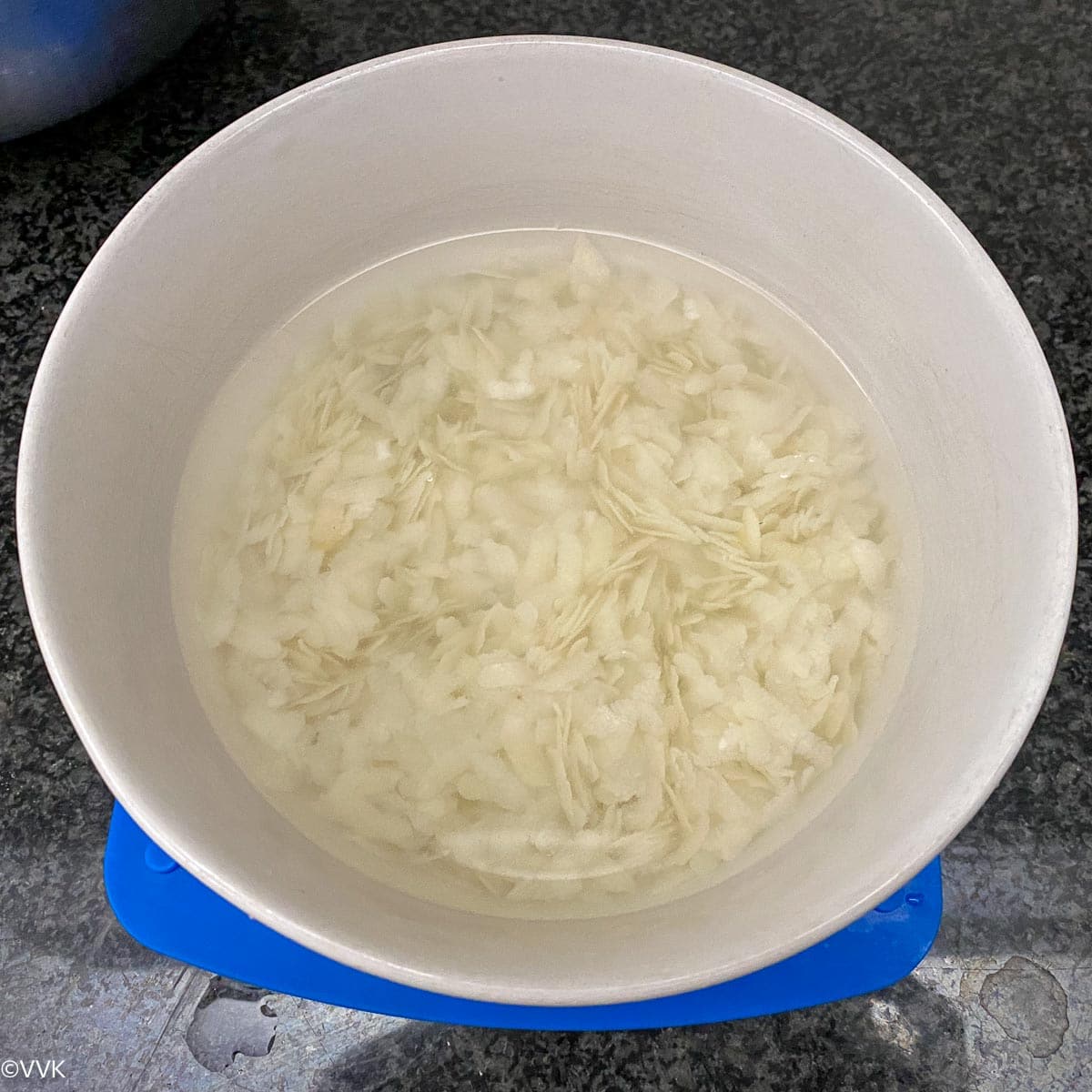
Grinding the ingredients
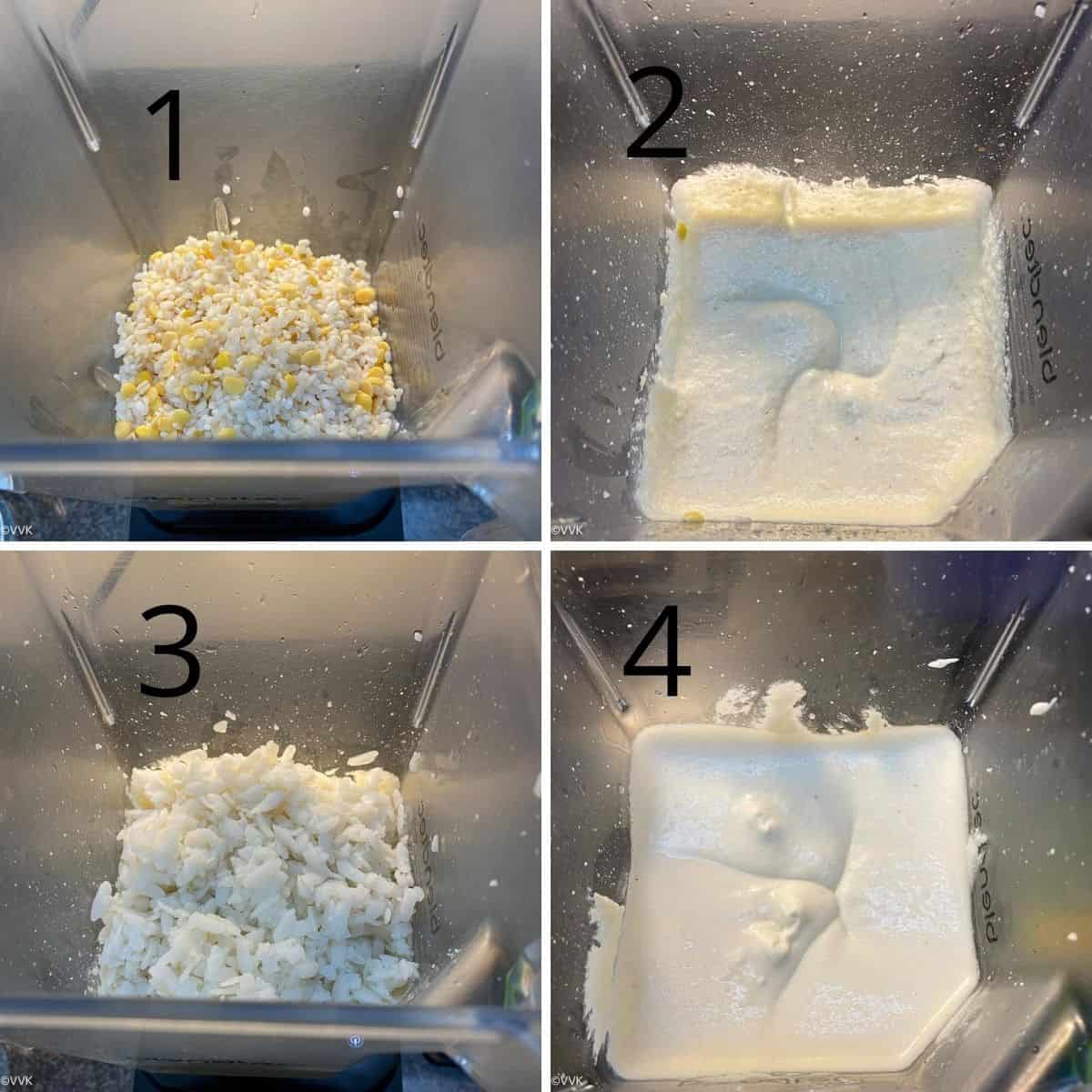
- (Pic 1 ) Drain the water from the rice, dal mixture. In the blender (I used my Blendtec), add ¼ cup of water to the bottom. Then, add the drained rice, dal mixture.
- (Pic 2) Grind it into a smooth batter by adding water as required. I added ¼ cup + 2 tbsp of water for this batch and used my smoothie setting to grind the batter. I ground it only for 40 seconds.
- (Pic 3) Now add the drained poha. I did not transfer my rice mixture. I added the poha on top of it.
- (Pic 4) Grind into a smooth batter by adding water as required. You might need little extra water for this batch. I added ½ cup + 2 tbsp of water, and you have to mix it in between using a silicone spatula. If not, the batter gets stuck in between the blades. Overall we need 1.5 to 2 cups of water to grind. I used 1.5 cups of water.
Fermenting the batter
- Now transfer the ground batter into a bowl. Use ¼ cup of water to rinse the blender and add it to the batter. Add salt and mix well.

- You can make the dosa right away, but I usually let it ferment for 5 to 8 hours. We love the sour fermented taste, so I let the batter sit. A slight fermentation like below is more than sufficient.
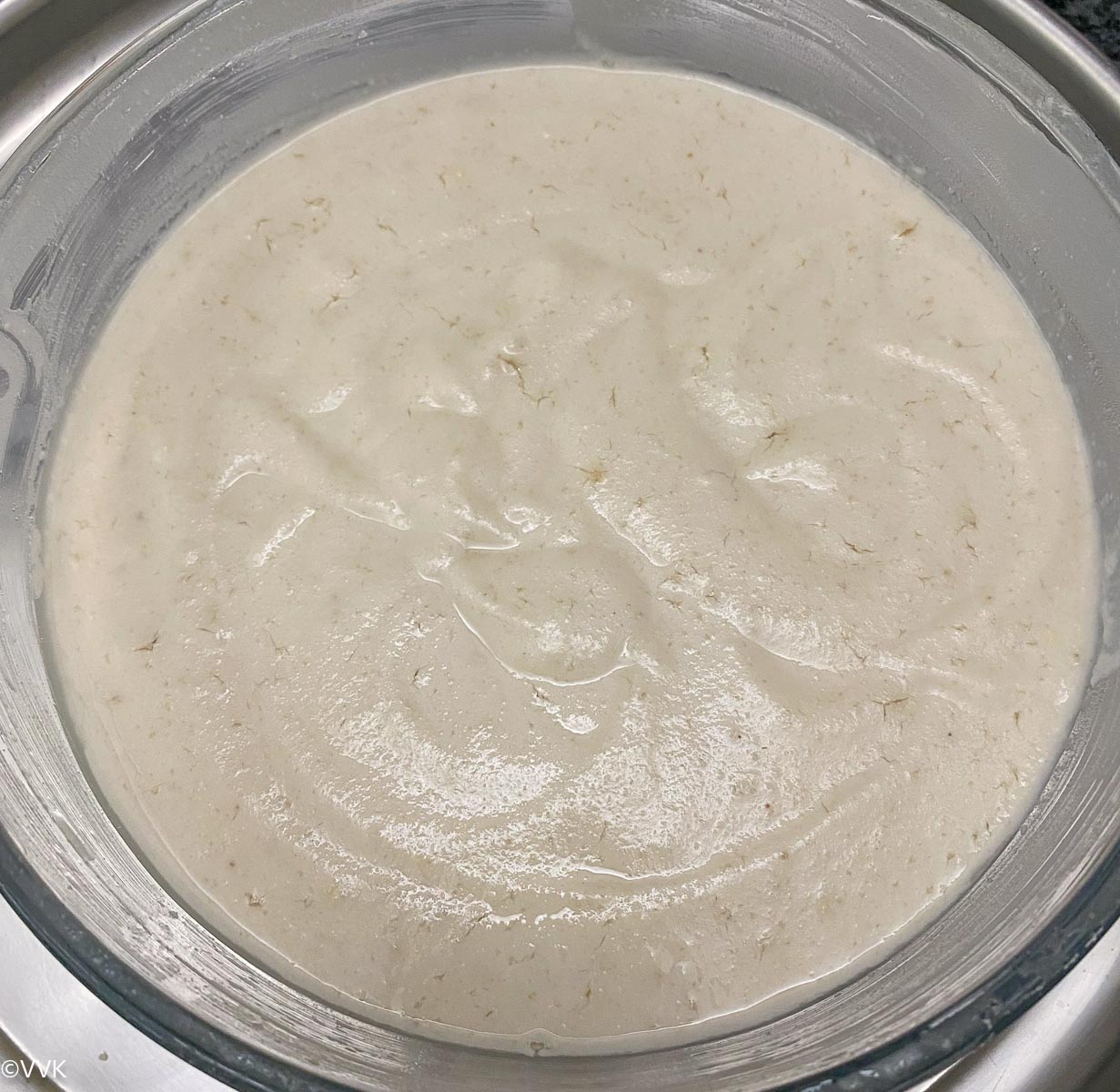
Preparing the dosa
- Mix the batter well, and it should be in pouring consistency. If needed, add ¼ cup of water. I did add a little water.
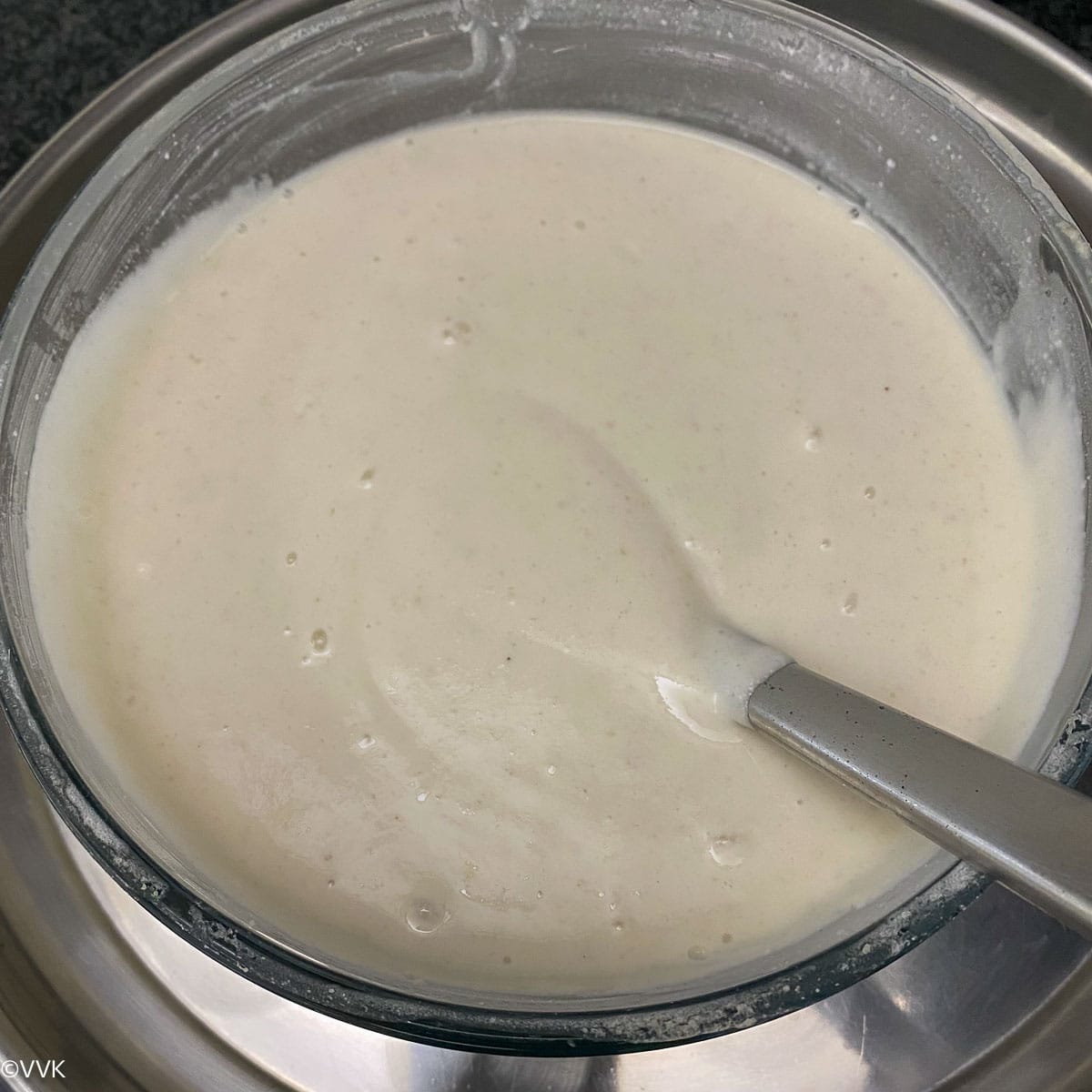
- (Pic 1)Heat a well seasoned cast-iron pan, and when it is hot, reduce the heat to medium-low. Take a spoon/ladle full of batter and pour it on the pan. Slightly spread it and do not make it too thin or spread as we do for regular dosa. Spread some oil around the edges; ½ tsp should be sufficient.
- (Pic 2) Cover it with the lid and let the aval dosa cook in the steam. It usually takes about 50 to 60 seconds. Timing is approx, make sure the top side completely cooked.
- (Pic 3)Here is the cooked dosa. As you can see, the color of the dosa is changed, and you can loosen the edges and remove the dosa from the pan – no need to flip and cook.
- (Pic 4) As I mentioned before, flipping and cooking the dosa on both sides is optional. But no harm in doing that. Just to show the bottom of the dosa, I have flipped it here. Just cook for 15 to 20 seconds and remove from the pan.
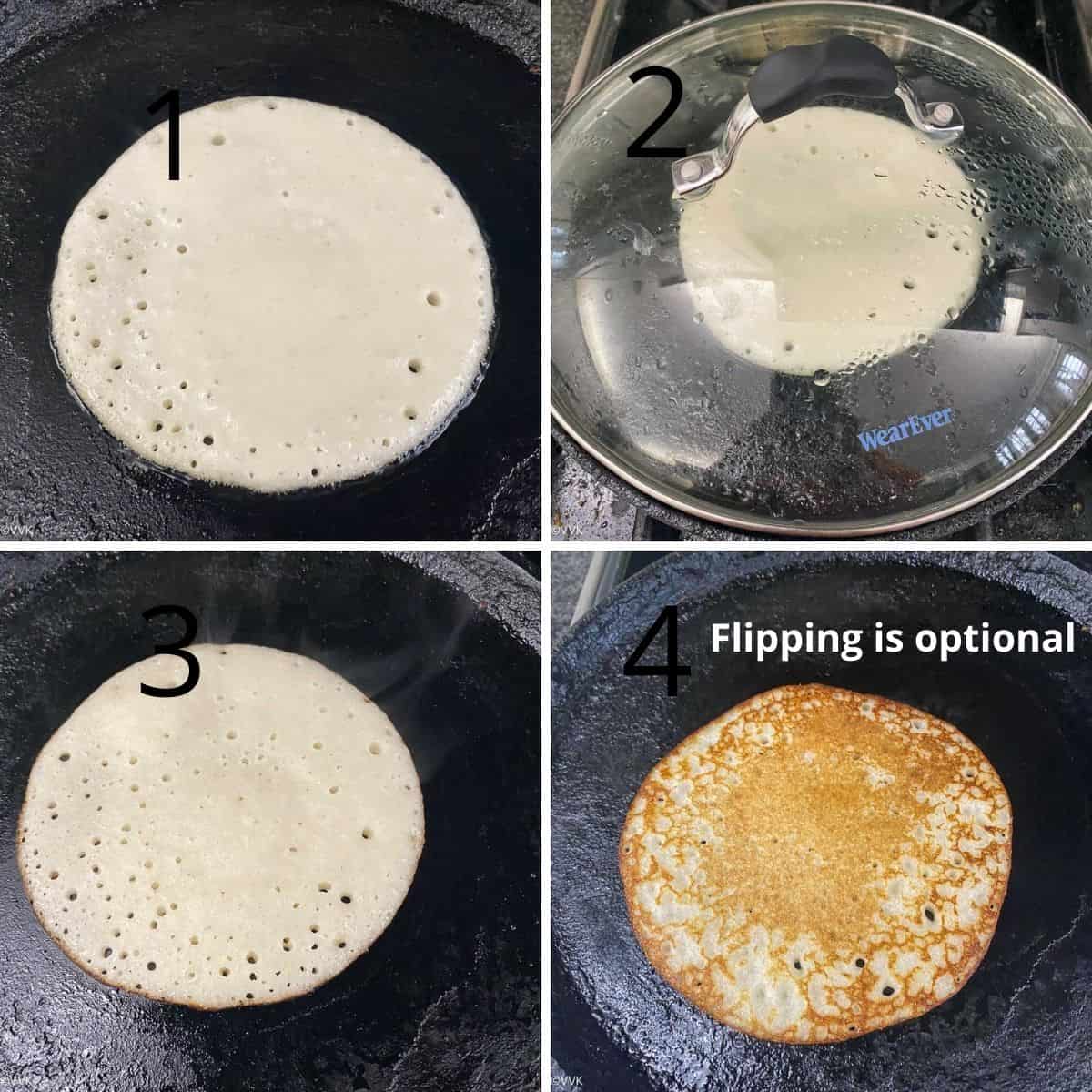
- Similarly, make the dosa with the remaining batter and serve hot with chutney or sambar.
Recipe notes
- I have always tried this dosa with toor dal. Toor dal adds nice texture and flavor. But you can experiment without it.
- Fermentation is optional, and flipping and cooking the dosa on the other is also optional.
- Aval dosa batter is for soft and spongy dosas. Cooking the dosa in steam yields soft dosa, and don’t skip that. Do not overspread the dosa.
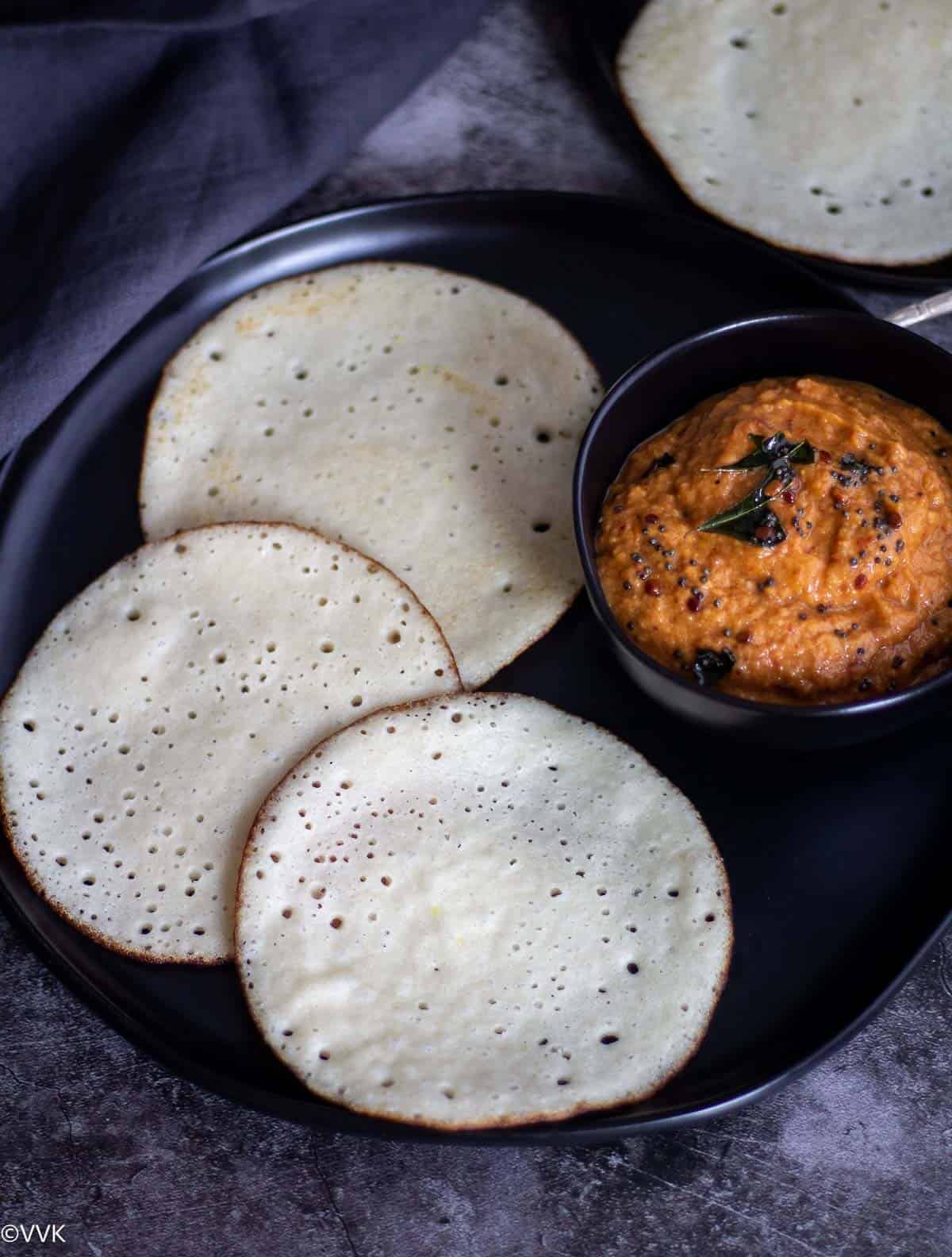
Explore other dosa recipes
PS: If you try this aval dosa, please don’t forget to comment and rate this recipe. If you have any questions, please leave a comment, and I will get to it ASAP. Make sure to follow me on my Pinterest for more healthy and delicious ideas! Follow me on Instagram or join my Facebook Group for more recipe updates! You can also sign-up for my newsletter for weekly updates.
📖 Recipe
Aval Dosai | Soft and Spongy Poha Dosa
Ingredients
Measurement Details: 1 cup = 240ml; 1 tbsp = 15ml; 1 tsp = 5ml;
- 1 cup idli rice
- ¼ cup urad dal
- 1 tsp fenugreek seeds
- 2 tbsp toor dal
- 1 cup poha/aval thick variety.
- 1.5 cups water to grind plus more for rinsing and soaking
- 1 tsp salt
- 3 tbsp oil for making the dosa. ½ tsp for each dosa
Instructions
Rinsing and soaking
- Take the idli rice, urad dal, fenugreek seeds, and toor dal in a bowl.
- Wash them together atleast 4 to 5 times until the water runs clear. Now add sufficient water and soak for atleast 5 to 6 hours.
- Take the poha in a separate bowl and rinse it thoroughly. Now add sufficient water soak poha for one hour.
Grinding the ingredients
- (Pic 1 ) Drain the water from the rice, dal mixture. In the blender (I used my Blendtec), add ¼ cup of water to the bottom. Then, add the drained rice, dal mixture.
- (Pic 2) Grind it into a smooth batter by adding water as required. I added ¼ cup + 2 tbsp of water for this batch and used my smoothie setting to grind the batter. I ground it only for 40 seconds.
- (Pic 3) Now add the drained poha. I did not transfer my rice mixture. I added the poha on top of it.
- (Pic 4) Grind into a smooth batter by adding water as required. You might need little extra water for this batch. I added ½ cup + 2 tbsp of water, and you have to mix it in between using a silicone spatula. If not, the batter gets stuck in between the blades. Overall we need 1.5 to 2 cups of water to grind. I used 1.5 cups of water.
Fermenting the batter
- Now transfer the ground batter into a bowl. Use ¼ cup of water to rinse the blender and add it to the batter. Add salt and mix well.
- You can make the dosa right away, but I usually let it ferment for 5 to 8 hours. We love the sour fermented taste, so I let the batter sit. A slight fermentation like below is more than sufficient.
Preparing the dosa
- Mix the batter well, and it should be in pouring consistency. If needed, add ¼ cup of water. I did add a little water.
- (Pic 1)Heat a well seasoned cast-iron pan, and when it is hot, reduce the heat to medium-low. Take a spoon/ladle full of batter and pour it on the pan. Slightly spread it and do not make it too thin or spread as we do for regular dosa. Spread some oil around the edges; ½ tsp should be sufficient.
- (Pic 2) Cover it with the lid and let the aval dosa cook in the steam. It usually takes about 50 to 60 seconds. Timing is approx, make sure the top side completely cooked.
- (Pic 3)Here is the cooked dosa. As you can see, the color of the dosa is changed, and you can loosen the edges and remove the dosa from the pan – no need to flip and cook.
- (Pic 4) As I mentioned before, flipping and cooking the dosa on both sides is optional. But no harm in doing that. Just to show the bottom of the dosa, I have flipped it here. Just cook for 15 to 20 seconds and remove from the pan.
- Similarly, make the dosa with the remaining batter and serve hot with chutney or sambar.
Notes
- I have always tried this dosa with toor dal. Toor dal adds nice texture and flavor. But you can experiment without it.
- Fermentation is optional, and flipping and cooking the dosa on the other is also optional.
- Aval dosa batter is for soft and spongy dosas. Cooking the dosa in steam yields soft dosa, and don’t skip that. Do not overspread the dosa.
Nutrition
I am not a nutritionist. The nutritional information is provided as a courtesy and is an estimate only. It varies depending upon the product types or brands.



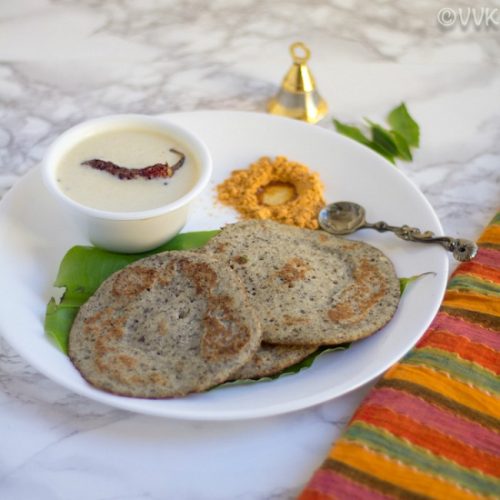
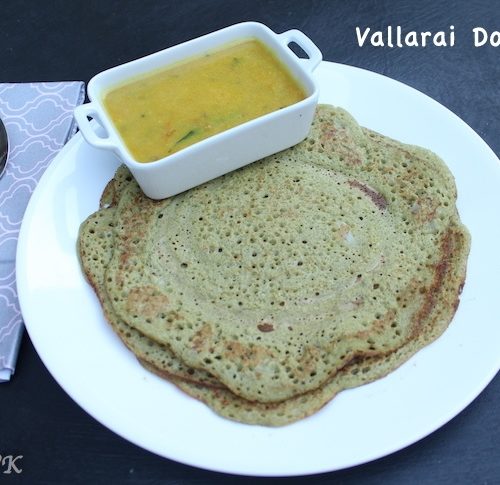
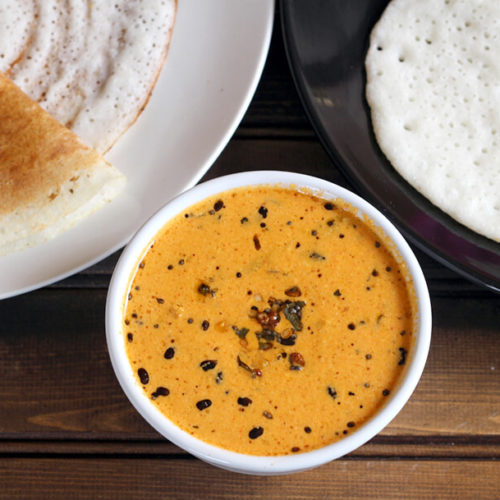
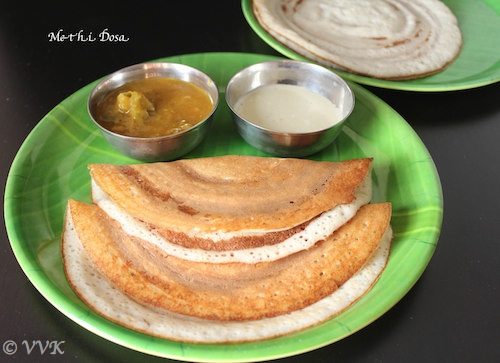
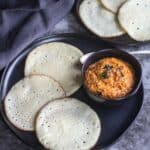

To double the batter volume can I just increase each ingredient by 2x?
Yes, that works. Thanks
Looking forward to your dosa series. These soft and spongy dosas are a favorited at our home as well. I have always ground the batter with just rice, poha and yogurt. Will bookmark this to try later.
Thanks Suma. I am trying to avoid dairy products so this procedure works for me.
Same pinch Srividya. I have also started the Dosa series. And I have also started with aval dosa but slightly different ingredients and size. Looking forward to the series.
Oh wow that’s awesome. Thanks Harini.
Aval dosa looks so soft and spongy. I also love making dosa with a fermented batter than making it immediately. Looking forward to your interesting dosa recipes
Thanks so much
Love dosas and this is a great one! I make it ina different way but would love to try this recipe too!
Thanks Radha.
I love that we can make this dosa instantly as well as fermented. We all prefer dosai to idli and looking forward to your different dosa batter recipes
Thanks Sandhya. :-)